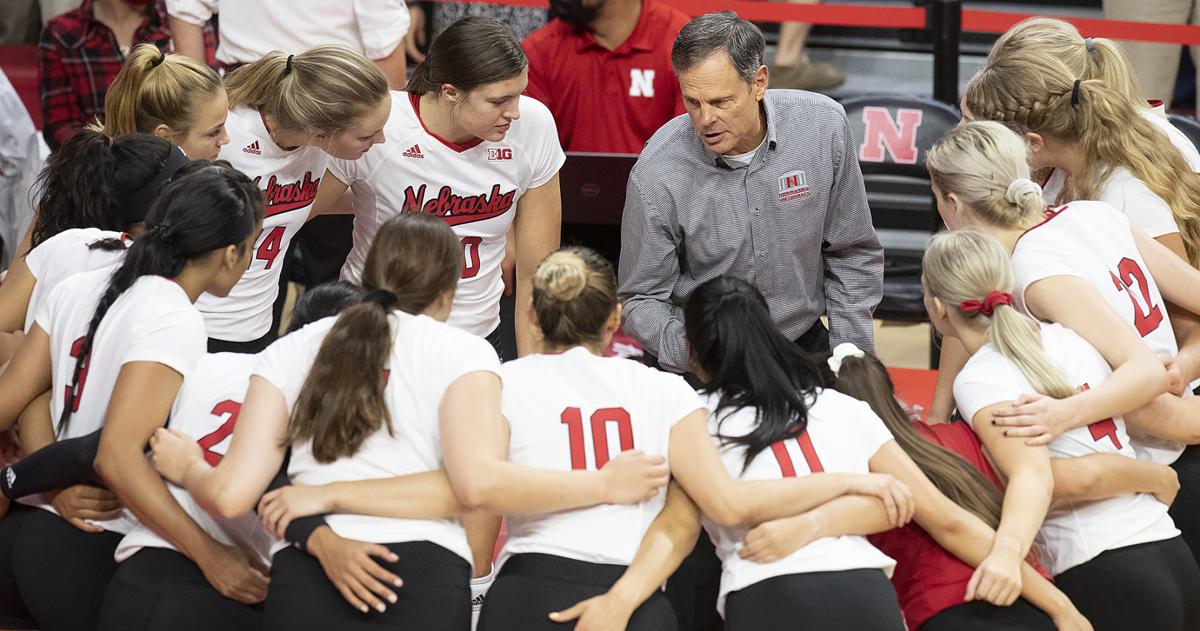
John Cook is no stranger to recruiting at an elite level.
Just last year, you’ll remember, his Nebraska volleyball program signed a class that included the top three recruits in the entire country, a feat that would be unfathomable for any other sport at the school and, really, in almost any sport at any school in the country.
Ohio State football signed the top two in the country according to 247Sports for the 2021 class and four of the top seven, including quarterback Quinn Ewers, who had a reported $1 million name, image and likeness deal and transferred from the Buckeyes to Texas after one year in Columbus.
That’s not exactly the same environment Cook finds himself in now, but the world of volleyball recruiting has also changed dramatically since athletes were able to profit off of their NIL beginning July 1 last summer.
As the landscape has developed in Lincoln and around the country, Cook explained how NU has learned to manage the challenges, embrace the opportunities for athletes and tried to turn it into another recruiting advantage for his program.
People are also reading…
“It’s very, very important in recruiting,” Cook told the Journal Star recently. “I think there’s a group of schools that are out there and upfront with it. There’s a group of schools that are trying to figure it out and they’re not sure what they can do or what they have, and then I think there’s smaller schools where it’s not even relevant to what they’re doing. The level we’re recruiting at and the schools we’re recruiting against, we’re going to have to ante up to compete.”
There are limitations, of course, to what schools can do with NIL in general — coaches and university employees cannot be directly involved in the process of securing deals for players — and specifically in recruiting. There aren’t many hard and fast rules regarding NIL, but one of the few is that NIL opportunities are not to be made directly in an effort to influence a recruit’s decision.
Recruits, though — some undoubtedly more than others — are factoring NIL opportunities into their decisions. So, how do you handle that as a coach?
“The route we’ve taken is, and the way our recruiting works when we can start talking to them on phone and Zoom calls and in-person when they visit — which, now they’re juniors in high school — we are in education mode. We’re teaching,” Cook said. “We’re teaching about NIL, we’re teaching about what it means to be a Nebraska volleyball player and all that comes with it. We’re talking about, with this, I don’t know if athletes are understanding this yet, but with all of this, there’s more expectations. So if you’re getting paid by these NIL deals and things are happening, they expect you to perform and do well. We’re trying to get them to understand there’s going to be more expectations and more that’s given, more is required.
“We’re trying to educate them on that so they don’t feel the pressure and feel like they’re letting a bunch of people down if they don’t play well, for example.”
And they’re helping athletes get in touch with players and companies that are directly in the NIL business.
“We’ve been very proactive in the educational component of it on how this works,” Cook said. “We’ve used examples from Lauren (Stivrins) to Lexi (Sun) to Nicklin (Hames), and we actually have them connect and give them the information where they can call ABM or call Opendorse and learn about how this place has worked.”
Each sport will have its variables, but there are some commonalities so far between volleyball and, say, football. One is that there are different levels of understanding and interest from recruit to recruit and family to family. Another is that the transfer landscape has been impacted substantially. High-level transfers that can have an immediate impact are difficult to find and, thus, valuable to programs. Add in the rapid expansion of donor collectives in the NIL world around the country, and big-time transfers have a lot of leverage. That makes the recruitment of a demonstrably productive college football player like TCU transfer Ochaun Mathis — a top Nebraska target who was in town last weekend on an official visit — or three-time All-American middle Kaitlyn Hord, a Penn State transfer who signed with Cook’s program, different than it might have been two years ago.
“Whoever we’re recruiting, whether they can make a lot of money or not or whether they think they can, we’re still going to recruit the players that fit in best here,” Cook said. “I have yet to have a recruit ask me, ‘Well, how much money do you think I can get?’ Or, ‘Well I’m getting this much here.’ We’re not in the bidding wars which I’m sure are going on in the men’s sports. I think the high school girls that we’re recruiting, I don’t think they’re watching ESPN every day. They’re doing other things, so I don’t think they’re in that world yet, but it’s probably coming down the road.
“It’s probably more with transfers because transfers are going to be able to compare and they understand more. But again, we’re educating parents and our recruits just to make sure they understand how all of this works, because a lot of them don’t have a clue how all of this works yet or have agents. Volleyball players don’t have agents yet. Is that coming down the road? Maybe.”
Photos: All of the sights from Nebraska football’s Red-White Spring Game

Nebraska’s Jarrett Synek (16) celebrates after scoring a touchdown during the second half of the Red-White Spring Game on Saturday at Memorial Stadium.
JUSTIN WAN, Journal Star

Nebraska quarterback Casey Thompson looks to make a throw during the Red-White Spring Game on Saturday at Memorial Stadium.
JUSTIN WAN, Journal Star

Nebraska’s quarterback Chubba Purdy makes a throw during the Red-White Spring Game on Saturday at Memorial Stadium.
JUSTIN WAN, Journal Star

Nebraska’s Isaac Gifford (left) strips the ball away from Evan Meyersick during the Red-White Spring Game on Saturday at Memorial Stadium.
JUSTIN WAN, Journal Star

Nebraska football head coach Scott Frost looks on during the Red-White Spring Game on Saturday at Memorial Stadium.
JUSTIN WAN, Journal Star

Nebraska’s Isaac Gifford (left) strips the ball away from Evan Meyersick during the Red-White Spring Game on Saturday at Memorial Stadium.
JUSTIN WAN, Journal Star

Karter Bowman, 10, of Omaha, stands outside Memorial Stadium before the Red-White Spring Game on Saturday.
JUSTIN WAN, Journal Star

Fans return to the campus of University of Nebraska-Lincoln for the Red-White Spring Game on Saturday at Memorial Stadium.
JUSTIN WAN, Journal Star

Nebraska’s Brian Buschini punts the ball during the Red-White Spring Game on Saturday at Memorial Stadium.
JUSTIN WAN, Journal Star

Nebraska’s Jaquez Yant (left) is tackled by Marques Buford during the Red-White Spring Game on Saturday at Memorial Stadium.
JUSTIN WAN, Journal Star

Nebraska’s Heinrich Haarberg runs across midfield during the Red-White Spring Game on Saturday at Memorial Stadium.
JUSTIN WAN, Journal Star

Nebraska’s Matthew Schuster scores during the Red-White Spring Game on Saturday at Memorial Stadium.
JUSTIN WAN, Journal Star

Nebraska’s DeShon Singleton tackles Matthew Schuster during the Red-White Spring Game on Saturday at Memorial Stadium.
JUSTIN WAN, Journal Star

Nebraska’s Kamonte Grimes catches a touchdown pass during the Red-White Spring Game on Saturday at Memorial Stadium.
JUSTIN WAN, Journal Star

Nebraska’s Matthew Schuster celebrates during the Red-White Spring Game on Saturday at Memorial Stadium.
JUSTIN WAN, Journal Star

Nebraska’s Kamonte Grimes catches a touchdown pass during the Red-White Spring Game on Saturday at Memorial Stadium.
JUSTIN WAN, Journal Star

Nebraska quarterback Jarrett Synek (right) hands off the ball to Trevin Luben during the Red-White Spring Game on Saturday at Memorial Stadium.
JUSTIN WAN, Journal Star

Nebraska’s Matthew Schuster runs away after faking a handoff as quarterback Matt Masker fumbles during the Red-White Spring Game on Saturday at Memorial Stadium.
JUSTIN WAN, Journal Star

Nebraska quarterback Heinrich Haarberg talks with head coach Scott Frost during the Red-White Spring Game on Saturday at Memorial Stadium.
JUSTIN WAN, Journal Star

Nebraska’s Kamonte Grimes (center) celebrates his touchdown with teammates John Goodwin (left) and Ty Hahn (right) during the Red-White Spring Game on Saturday at Memorial Stadium.
JUSTIN WAN, Journal Star

Nebraska quarterback Heinrich Haarberg throws the ball during the Red-White Spring Game on Saturday at Memorial Stadium.
JUSTIN WAN, Journal Star

Nebraska’s Chubba Purdy (6) throws a pass during the Red-White Spring Game on Saturday at Memorial Stadium.
JAIDEN TRIPI, Journal Star

Nebraska’s Isiah Harris (right) sprints with the ball past Jimari Butler during the Red-White Spring Game on Saturday at Memorial Stadium.
JAIDEN TRIPI, Journal Star

Nebraska’s Ru’Quan Buckley (middle) breaks through Kevin Williams Jr. (left) (72) and Ian Boerkircher during the Red-White Spring Game on Saturday at Memorial Stadium.
JAIDEN TRIPI, Journal Star

Nebraska celebrates Jarrett Synek’s touchdown during the Red-White Spring Game on Saturday at Memorial Stadium.
JAIDEN TRIPI, Journal Star

Nebraska’s Jarett Synek (16) (left) runs past Simon Otte for a touchdown during the Red-White Spring Game on Saturday at Memorial Stadium.
JAIDEN TRIPI, Journal Star

Nebraska’s John Goodwin (right) catches a pass over Phalen Sanford during the Red-White Spring Game on Saturday at Memorial Stadium.
JAIDEN TRIPI, Journal Star

Nebraska’s senior offensive analyst Ron Brown talks to the Huskers after the Red-White Spring Game on Saturday at Memorial Stadium.
JAIDEN TRIPI, Journal Star

Nebraska’s Matthew Schuster (left) gets tackled by DeShon Singleton during the Red-White Spring Game on Saturday at Memorial Stadium.
JAIDEN TRIPI, Journal Star

Nebraska’s John Goodwin (46) prepares to block during the Red-White Spring Game on Saturday at Memorial Stadium.
JAIDEN TRIPI, Journal Star

Nebraska’s Matthew Schuster dives for a touchdown during the Red-White Spring Game on Saturday at Memorial Stadium.
JAIDEN TRIPI, Journal Star

Nebraska’s Bryce Benhart (left) blocks Caleb Tanner during the Red-White Spring Game on Saturday at Memorial Stadium.
JAIDEN TRIPI, Journal Star

Fans watch the Red-White Spring Game on Saturday at Memorial Stadium.
JAIDEN TRIPI, Journal Star

Nebraska’s Broc Bando (73) takes the field with his teammates before the Red-White Spring Game on Saturday at Memorial Stadium.
JAIDEN TRIPI, Journal Star

Nebraska’s Rahmir Johnson (14) takes the field before the Red-White Spring Game on Saturday at Memorial Stadium.
JAIDEN TRIPI, Journal Star

Nebraska’s Hunter Anthony (right) tackles Blaise Gunnerson during the Red-White Spring Game on Saturday at Memorial Stadium.
JUSTIN WAN, Journal Star
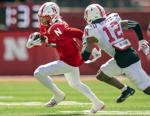
Nebraska’s Trey Palmer (left) runs away from Marques Buford during the Red-White Spring Game on Saturday at Memorial Stadium.
JUSTIN WAN, Journal Star

Nebraska’s Logan Smothers throws a ball during the Red-White Spring Game on Saturday at Memorial Stadium.
JUSTIN WAN, Journal Star

Nebraska’s Alante Brown (left) is chased by Nick Henrich during the Red-White Spring Game on Saturday at Memorial Stadium.
JUSTIN WAN, Journal Star

Nebraska’s Hunter Anthony (right) goes after Blaise Gunnerson during the Red-White Spring Game on Saturday at Memorial Stadium.
JUSTIN WAN, Journal Star

Nebraska’s Anthony Grant runs with the ball during the Red-White Spring Game on Saturday at Memorial Stadium.
JUSTIN WAN, Journal Star

Nebraska’s Anthony Grant runs with the ball during the Red-White Spring Game on Saturday at Memorial Stadium.
JUSTIN WAN, Journal Star

William Prince (left), Nebraska’s director of players development, greets athletic director Trev Alberts during the Red-White Spring Game on Saturday at Memorial Stadium.
JUSTIN WAN. Journal Star

Nebraska’s Ashton Hausmann walks off the field after an injury during the second half of the Red-White Spring Game on Saturday at Memorial Stadium.
JUSTIN WAN, Journal Star

Nebraska offensive line coach Donovan Raiola during the Red-White Spring Game on Saturday at Memorial Stadium.
JUSTIN WAN, Journal Star

Nebraska’s Nash Hutmacher is injured on the field during the second half of the Red-White Spring Game on Saturday at Memorial Stadium.
JUSTIN WAN, Journal Star

Nebraska athletic director Trev Alberts at the Red-White Spring Game on Saturday at Memorial Stadium.
JUSTIN WAN, Journal Star

Nebraska’s AJ Rollins catches a long pass as he is pressured by Derek Branch (left) and Myles Farmer (4) during the Red-White Spring Game on Saturday at Memorial Stadium.
JUSTIN WAN, Journal Star

Nebraska offensive coordinator Mark Whipple walks off the field after the Red-White Spring Game on Saturday at Memorial Stadium.
JUSTIN WAN, Journal Star

Nebraska’s tight end coach Sean Beckton (left) and wide receivers coach/passing game coordinator Mickey Joseph coach from the sidelines during the second half of the Red-White Spring Game on Saturday at Memorial Stadium.
JUSTIN WAN, Journal Star

Nebraska’s Rahmir Johnson looks for room to run during the first half of the Red-White Spring Game on Saturday at Memorial Stadium.
JUSTIN WAN, Journal Star

Nebraska’s wide receivers coach/passing game coordinator Mickey Joseph coaches from the sidelines during the second half of the Red-White Spring Game on Saturday at Memorial Stadium.
JUSTIN WAN, Journal Star

Nebraska’s James Carnie (center) is tackled by Simon Otte (left) and Mikai Gbayor during the second half of the Red-White Spring Game on Saturday at Memorial Stadium.
JUSTIN WAN, Journal Star

Nebraska’s Cooper Jewett (29) escapes from Seth Malcom during the second half of the Red-White Spring Game on Saturday at Memorial Stadium.
JUSTIN WAN, Journal Star

Nebraska offensive coordinator Mark Whipple looks on from the sidelines during the Red-White Spring Game on Saturday at Memorial Stadium.
JUSTIN WAN, Journal Star

Nebraska’s Jarrett Synek (16) celebrates his touchdown during the second half of the Red-White Spring Game on Saturday at Memorial Stadium.
JUSTIN WAN, Journal Star

Nebraska’s Kamonte Grimes looks for room to run during the Red-White Spring Game on Saturday at Memorial Stadium.
JUSTIN WAN, Journal Star

Nebraska’s Jarrett Synek (16) celebrates his touchdown during the second half of the Red-White Spring Game on Saturday at Memorial Stadium.
JUSTIN WAN, Journal Star

Nebraska’s Chase Contreraz kicks a field goal during the Red-White Spring Game on Saturday at Memorial Stadium.
JUSTIN WAN, Journal Star

Nebraska fans cheer during the Red-White Spring Game on Saturday at Memorial Stadium.
JUSTIN WAN, Journal Star

Nebraska’s Tommi Hill looks toward the punted ball during the Red-White Spring Game on Saturday at Memorial Stadium.
JAIDEN TRIPI, Journal Star

Nebraska’s Zach Duval (left) and Ron Brown chat before the Red-White Spring Game on Saturday at Memorial Stadium.
JAIDEN TRIPI, Journal Star

Nebraska athletic director Trev Alberts walks around the field before the Red-White Spring Game on Saturday at Memorial Stadium.
JAIDEN TRIPI, Journal Star

Nebraska’s senior offensive analyst Ron Brown walks on the field during warmups before the Red-White Spring Game on Saturday at Memorial Stadium.
JAIDEN TRIPI, Journal Star

Nebraska’s DeShon Singleton (9) waits for the next down during the Red-White Spring Game on Saturday at Memorial Stadium.
JAIDEN TRIPI, Journal Star

Nebraska’s coaches Donovan Raiola (left) and Mark Whipple walk to the locker room for halftime during the Red-White Spring Game on Saturday at Memorial Stadium.
JAIDEN TRIPI, Journal Star

Nebraska’s Nate Boerkircher (right) celebrates with Anthony Grant (23) after Grant scored the first touchdown during the Red-White Spring Game on Saturday at Memorial Stadium.
JAIDEN TRIPI, Journal Star

Nebraska’s Markese Stepp (30) and the team enter the field to warm up before the Red-White Spring Game on Saturday at Memorial Stadium.
JAIDEN TRIPI, Journal Star

Nebraska’s Tommi Hill (0) and Latrell Neville (7) get ready for the next down during the Red-White Spring Game on Saturday at Memorial Stadium.
JAIDEN TRIPI, Journal Star

Nebraska’s Omar Brown (13) shakes hands with teammate Latrell Neville after the Red-White Spring Game on Saturday at Memorial Stadium.
JAIDEN TRIPI, Journal Star

Nebraska head coach Scott Frost watches during the Red-White Spring Game on Saturday at Memorial Stadium.
JAIDEN TRIPI, Journal Star

Fans release balloons as a celebration for the first touchdown during the Red-White Spring Game on Saturday at Memorial Stadium.
JAIDEN TRIPI ,Journal Star

Nebraska’s Casey Thompson (11) warms up before the Red-White Spring Game on Saturday at Memorial Stadium.
JAIDEN TRIPI, Journal Star

Nebraska players make their way to the tunnel for halftime during the Red-White Spring Game on Saturday at Memorial Stadium.
JAIDEN TRIPI, Journal Star

Nebraska transfer portal target Ochaun Mathis stands on the field before the Red-White Spring Game on Saturday at Memorial Stadium.
JAIDEN TRIPI, Journal Star

Nebraska defensive coordinator Erik Chinander talks with former player Cam Taylor-Britt during the Red-White Spring Game on Saturday at Memorial Stadium.
JUSTIN WAN, Journal Star

Football recruit Marquise Lightfoot is seen before the Red-White Spring Game on Saturday at Memorial Stadium.
JUSTIN WAN, Journal Star

Football recruit William Watson is seen on the sidelines before the Red-White Spring Game on Saturday at Memorial Stadium.
JUSTIN WAN, Journal Star

Football recruits Teitum Tuioti (left) and Maverick Noonan stand by the sidelines before the Red-White Spring Game on Saturday at Memorial Stadium.
JUSTIN WAN, Journal Star

Football recruits (from left) Joshua Robinson, Marquise Lightfoot and K’Vion Thunderbird are seen before the Red-White Spring Game on Saturday at Memorial Stadium.
JUSTIN WAN, Journal Star

Nebraska’s Ty Hahn (right) celebrates his touchdown with teammate Zach Weinmaster during the second half of the Red-White Spring Game on Saturday at Memorial Stadium.
JUSTIN WAN, Journal Star

Nebraska football coach Scott Frost looks on during the second half of the Red-White Spring Game on Saturday at Memorial Stadium.
JUSTIN WAN, Journal Star
Contact the writer at pgabriel@journalstar.com or 402-473-7439. On Twitter @HuskerExtraPG.
- • Texts from columnists
- • The most breaking Husker news
- • Cutting-edge commentary
- • Husker history photo galleries
Get local news delivered to your inbox!

Must See
-
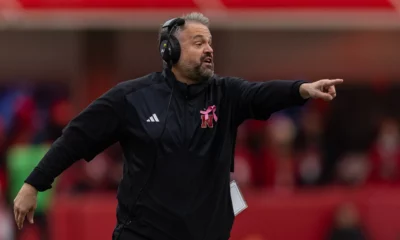

Football
/ 2 days agoCoach Rhule Reflects on Spring Practice and Transfer Portal
Nebraska’s football head coach, Matt Rhule, took some time to address the media after...
-
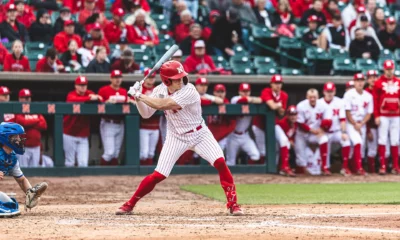

Baseball
/ 3 days agoLate Rally Dooms Huskers in 6-4 Loss to Creighton
In a thrilling matchup at Hawks Field at Haymarket Park, the Nebraska baseball team...
-
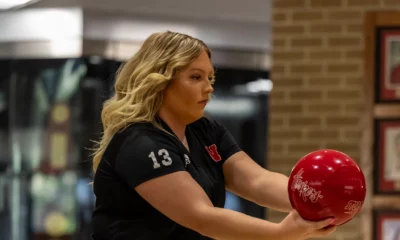

Bowling
/ 7 days agoThree Huskers Earn NTCA All-American Honors
Three members of the University of Nebraska bowling team have been selected to the...




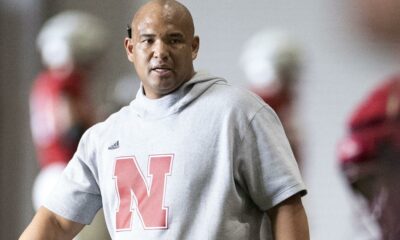

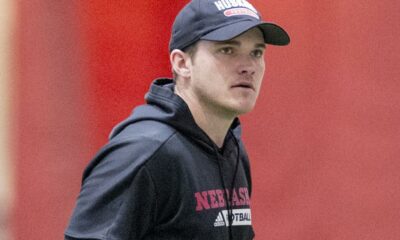

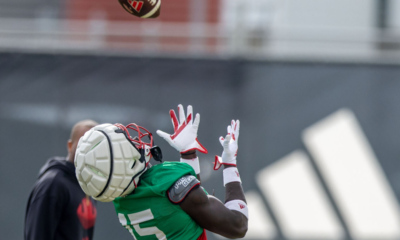

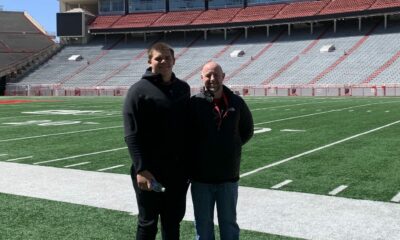



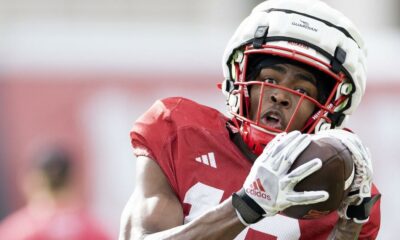





You must be logged in to post a comment Login